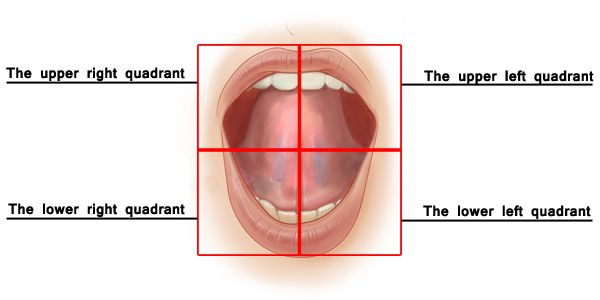January 4 2018

While sitting on a dental chair, it can be pretty confusing to hear the discussions between office’s staff and dentist while not being able to understand what they say. And this can be pretty embarrassing sometimes. Although you don’t need to understand everything dentists say about your dental health, there are a few things that you should know in order to respond to your dentist in timely and effective manner.
Having that said, there are some dental terminologies that you can know about in order to understand what your dentist is saying about your dental health.
Quadrant
When dentists say the word ‘quadrant’, they basically talk about the portion of your mouth. Now, it is worth understanding what the portion of your mouth really is. A human mouth is usually divided into 4 quadrants in dentistry. Both upper and lower portions of mouth consist of 2 quadrants each. It starts from top right. The top right portion of the mouth is called quadrant one. Top left is known as quadrant two.

Lower portion’s quadrants are a bit confusing. The quadrant three is the left side of lower portion of the mouth. And fourth quadrant is the right side of lower portion.
When they talk about any infection or disorder in the specific portion, they name the quadrant along with the name of infection. Hence, you can easily interpret things in your mind.
Numbering the gums
Gum disease is one of the most common issues that most of the oral patients come up with. To make thing less confusing, there is a shorthand terminology which is used in the dental office. It is basically concerned with the gap between the pocket of your gum and the nearby tooth. Given the gap, each tooth gets a number. This way, the gum health is determined with the help of gum numbering.
The distance in this regard is measured in millimeters. If you are concerned about the health of your gums, you will wish for this distance to be as shorter as possible. Consequently, bigger gap can denote gum disease such as tartar buildup and plaque.
If the gap between tooth and gum is 1 to 3 millimeters, you don’t have anything to worry about. Your mouth is healthy this way. However, you need to worry about the health of your gums if this gap is of 5 millimeters. The dentist may suggest you to get deep cleaning. If the problem gets severe, the dentist may suggest corrective surgery to treat the problem.